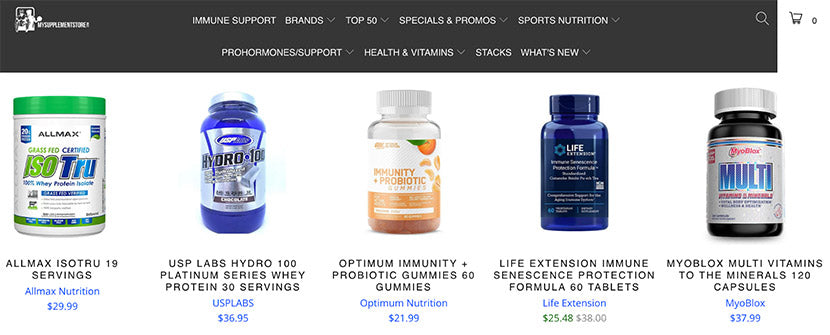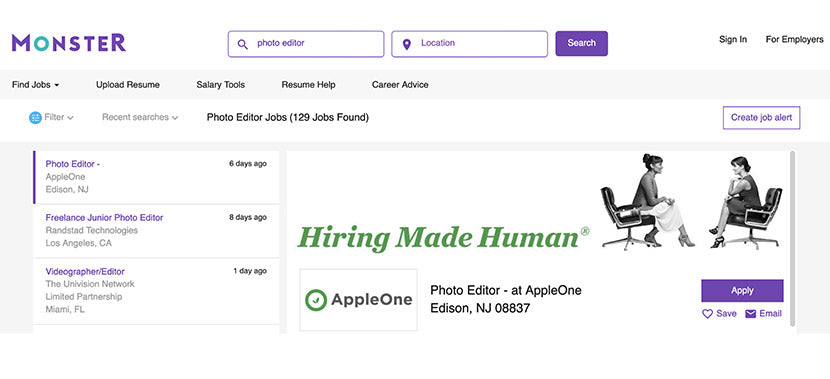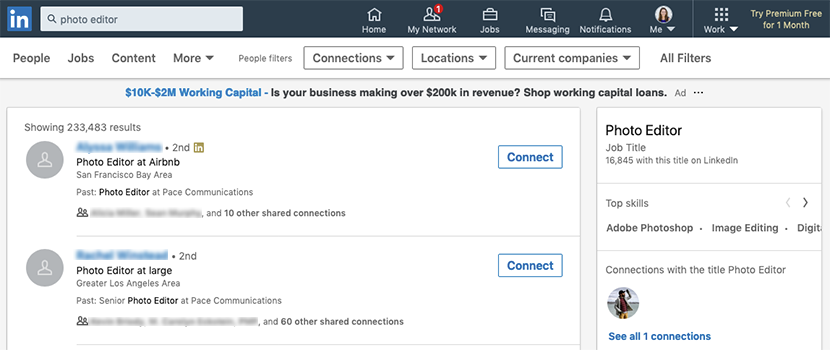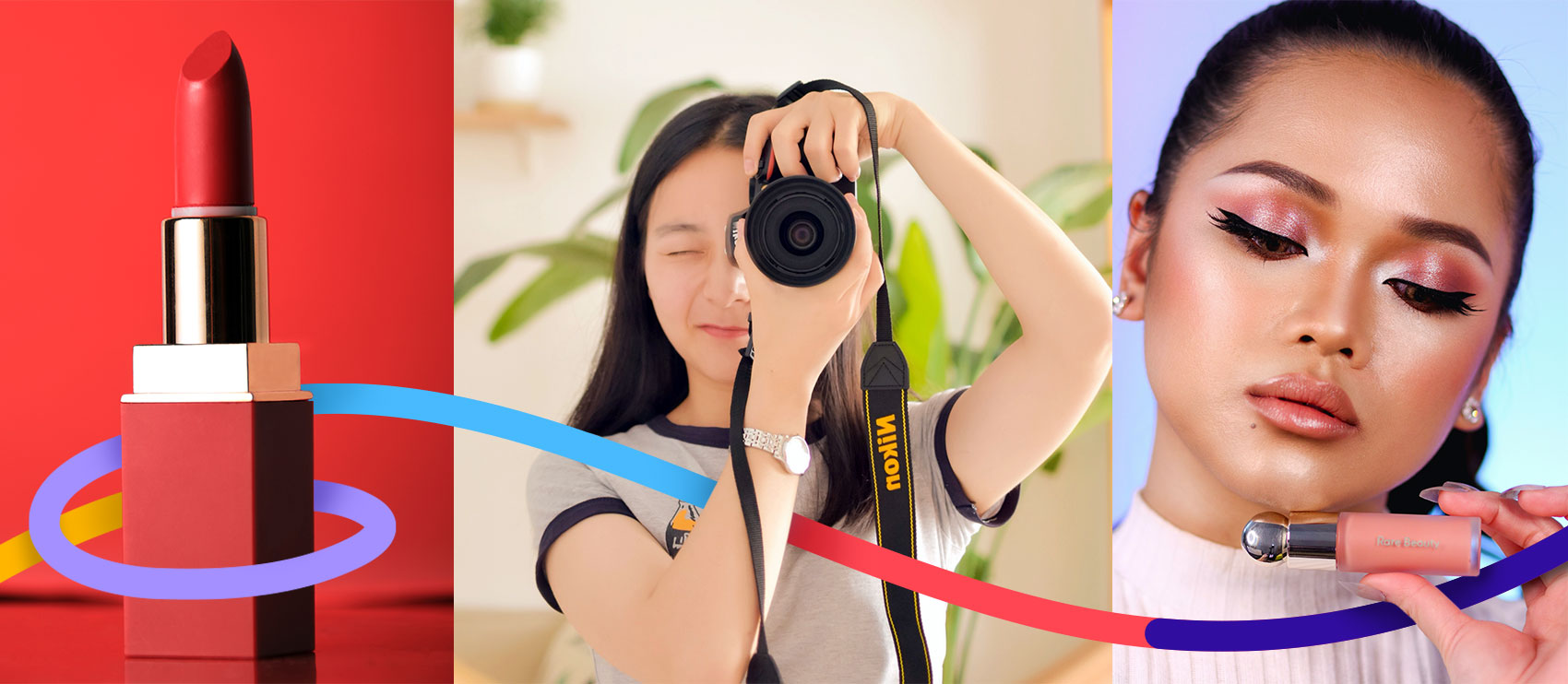If you run an ecommerce site, you know how important it is to have amazing product photography. Research by Weebly found that over 75% of ecommerce shoppers say that product photos are very influential in their buying decisions.
Receive free ecommerce & product photography tips
But getting your product images right requires more than just taking good photos. Yes, capturing the right angle and using proper lighting are important, but the work doesn’t stop there. Various editing tasks—such as background removal, image retouching, and clipping path—are often necessary to make your photos pop.
That said, these things take time, and you’re busy. That’s why it’s a good idea to delegate or outsource your photo editing needs so you can focus on running and growing your ecommerce business.
Where exactly can you find professional photo editing services? These 10 sources are excellent places to start.
1. Your internal team
The right photo editor may be closer than you think. See if you can get someone in your team to edit your photos. Relying on your in-house staff may make collaboration much easier since they work the same hours you do and you’re able to communicate with them face-to-face.
John Frigo, the digital marketing lead at My Supplement Store, says that when it comes to photo editors, they turn to their employees first, provided they have the bandwidth to do so.
“We have a graphic designer on our team who does a lot of the editing,” he says. “However, everyone on our team can do a basic edit job like making a white background, adding some vibrancy to the photos, etc.”
 Pros:
Pros:
- Work with people who are already familiar with your brand, style, and vision.
- The collaboration process may be smoother, especially if you work in the same office or timezone.
Cons:
- The photo editing work may take your employees away from their “official” duties, where they make a bigger impact on the company and the bottom line.
- You may run into quality issues, particularly if your staff members don’t specialize in photo editing or have to juggle too many responsibilities.
2. Your network
Your professional network can be a great resource for finding vendors and service providers. Ask your peers, fellow entrepreneurs, or even your employees if they know any good photo editors for ecommerce.
Seeking referrals can save you a lot of time because someone you know has already done the vetting for you. Just make sure to ask for recommendations from people you trust!
Pros:
- Since referrals have been vetted by people you know and (hopefully) trust, you can be more confident in their ability to deliver quality work.
- You can potentially save time from having to evaluate too many photo editors.
Cons:
- The contractors or companies you interact with will be limited to the people within your network.
- The photo editors you’re referred to may be a great fit for your colleagues, but that doesn’t necessarily mean they can deliver on your specific needs.
3. Your existing vendors or solution providers
Many solution providers — particularly technology platforms — have networks of experts and vendors that you can tap into. One of the best things about using vendor-recommended experts is that you’ll be working with someone who’s already familiar with the platform you’re on. This may save time when briefing and training your photo editor.
Pros:
- Most vendor directories are simple to use, so finding the right candidates should be a breeze.
- The photo editors you end up hiring are already familiar with your tech platform, which will make the briefing and collaboration process easier.
Cons:
- The freelancers or agencies you find will be limited to the people within your vendor’s network.
- Sometimes, these networks aren’t carefully vetted, so you’ll need to your own due diligence to make sure they’re the right fit.
4. Search engines
Prefer to find service providers on your own? Conduct an online search. Enter keywords like "photo editor for hire" or "professional photo editing services near me" if you want someone local, then see what comes up.
You will likely come across independent contractors as well as professional photo editing companies such as Path. From there, it’s a matter of perusing the results to see which is the best photo editing service to use for you.
Searching online opens up a vast array of options. This is generally a good thing, but it does mean more work for you.
While the above mentioned methods handle some of the vetting work for you, searching on your own means you have to do your homework and ensure you choose contractors or companies that deliver quality work, possess the right values, and implement ethical business practices.
Path, for example, believes in serving our customers while making the world a better place. Our company is a UN Global Compact Partner which means we're accredited for providing ethical working conditions (unlike other companies which work like sweatshops).

Pros:
- An online search opens you up to a wide variety of photo editors, companies, and contractors.
- You aren’t limited to your network or your vendor’s platform.
Cons:
- Having too many results can be overwhelming.
- There’s a lot more work required around researching and vetting photo editors, as there are tons of low-quality and unreliable options out there.
5. Review websites
If Google is too broad, you can narrow down your search by browsing review websites like Trustpilot. These sites compile ratings and reviews from other users, and they provide a convenient way to find out what other people think about a vendor.
Pros:
- You’ll be able to see — in their own words — what other people think of the vendors that you’re considering.
- Star ratings make it quick and easy to evaluate photo editors.
Cons:
- You need to be wary of fake and incentivized reviews.
- Your options will be limited to the photo editors listed on the review sites.
6. Universities and colleges
If you’re on a budget or if you’re looking for an intern (and don’t mind spending time educating them), then consider using your local college or university as a resource. Post a listing or use an online job site for students to find candidates.
Dan Edmonson, founder and CEO of Dronegenuity, says his team has found success through this route. They use the college and university job site Handshake.

“Most current college students grew up in a world of social media and YouTube,” he says. “They’ve taught themselves necessary image editing skills and enjoy the process. There’s a massive pool of editing talent enrolled in school right now.”
Pros:
- Hiring interns or students is a low cost way to get photo editing services.
Cons:
- Since you won’t be working with a pro yet, you may run into quality issues.
- Interns and students are also less experienced in professional settings, so they may lack the professionalism and commitment you need.
7. Job listings
If you have highly specific qualifications or are looking for someone to work part-time or full-time, consider posting a job listing on your company site as well as career websites like Monster or Indeed. It’ll be time consuming, but it may be the best route if you need a pro to handle specialized photo editing.
 Edmonson also recommends this tactic. "We use our company’s website while also engaging in the typical job posting process on LinkedIn, Indeed, etc.,” he says. “We find it effective to use niche job boards, our internal network, and internships to find professional and qualified photo editors."
Edmonson also recommends this tactic. "We use our company’s website while also engaging in the typical job posting process on LinkedIn, Indeed, etc.,” he says. “We find it effective to use niche job boards, our internal network, and internships to find professional and qualified photo editors."
Pros:
- You can tailor your job listings for your specific needs.
- You’ll attract people to your company instead of actively seeking them out.
Cons:
- Posting listings, interviewing candidates, and conducting background checks takes a lot of work.
- There’s a possibility that you’ll get too many applicants and get overwhelmed.
8. LinkedIn
Another easy way to find professional photo editors is to search for them on LinkedIn. The site has some very useful search filters — including location, industry, current and past companies, etc. These parameters make searching for prospects much quicker.

Once you find qualified candidates, you can reach out to them right from LinkedIn’s messaging platform.
Pros:
- It’s easy to narrow down your search thanks to LinkedIn’s filtering options.
- Prospecting and communicating with candidates can be done on one platform.
Cons:
- The talent pool is limited to what’s available on LinkedIn.
- Not everyone actively checks their LinkedIn account, so you may not get an immediate response from candidates.
- Unless you pay to upgrade your LinkedIn membership, you’re limited to how many messages you can send to people outside of your network.
9. Online communities
Facebook and LinkedIn are home to tons of communities that cover just about any topic or interest. Join a group relevant to your business and ask the community for photo editor recommendations.
This method lets you get some quick suggestions and introductions from people outside your immediate network. You might even make some new friends or connections while you’re at it!
Pros:
- Online communities are a great way to get input from other professionals outside your immediate network.
- Starting a conversation on social media groups is easy and takes just a few minutes.
Cons:
- Not all communities are created equal, so posting on inactive or low-quality groups won’t get you results.
10. Freelancing platforms
Freelancing platforms like Upwork and Fiverr can serve as convenient solutions for finding photo editors because they let you search, communicate, and pay contractors from one place.
There are some downsides, though. For starters, using freelancing platforms means you're limited to their ecosystem, so you can only tap into contractors who are active on these sites.
You may also run into quality issues, especially if you’re trying to hire people on the cheap. My Supplement Store, for example, uses Fiverr from time to time, and according to Frigo, the sellers they've encountered aren't always consistent.
"When we have too much going on or can't get a photo perfect, we'll sometimes reach out to Fiverr sellers. The quality of Fiverr can be hit or miss, but something like cleaning up a product photo is a pretty safe bet that the job will be done right and you can't beat the price."
Pros:
- Finding, communicating, and paying contractors can be done on one platform — which could make things easier for your team.
Cons:
- The talent pool is limited to the contractors on the site.
- You could run into quality issues, particularly if you’re hiring freelancers on the low end.
Find the source that works best for you
There isn’t a shortage of sources for photo editors, and the right approach all depends on factors like:
- Your workload
- Access to talent
- Budget
- Work style and preferences
- Time constraints
Take all these things into consideration and then decide on the best place to find photo editing services. For best results, use 2–3 to see which one works best for your business.
And regardless of where you decide to find a photo editor, remember that the ultimate goal is to end up with high-quality and optimized photos that drive sales. So, it’s important to invest the time and resources in finding the best editors for your ecommerce product photos.














